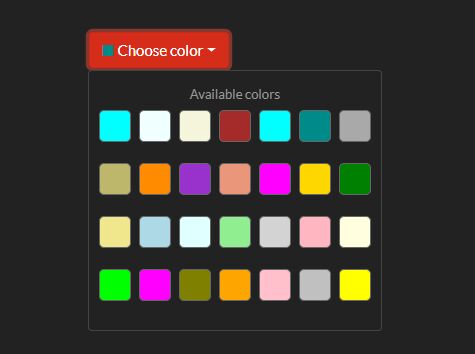

This satisfies a large number of use cases, because most people just want to align their color schemes across pages or to their image content. Therefore we implemented the eyedropper feature for the desktop app first and later integrated it into our mobile apps.Īnother workaround we provided is to have the color panel show existing colors in the design and prominent colors from images added. A desktop app can capture page content without a problem. However, an independent desktop app has a different security model than a generic web app because it requires explicit installation, and its web view doesn’t have access to private data in browsers by default. When we were releasing our Canva desktop app, one of the known shortcomings was that users no longer had access to browser extensions they could use for color picking. While an eyedropper integrated into the web app is difficult, one workaround we’ve been suggesting to users is to use browser extensions, such as ColorZilla, to pick colors from the page. Some are just too slow or resource consuming to use, and others don’t have enough fidelity that users would expect from an eyedropper.


However, none of these methods are suitable for an eyedropper. We have also developed a Rust implementation of the design renderer, which can be compiled to WebAssembly to provide rasterization of Canva designs. There are also JavaScript libraries that enable capturing page content, either via the aforementioned SVG approach or by having their own, independent CSS rendering implementation. It is possible to rasterize an arbitrary DOM tree through SVG, which allows embedding HTML within an SVG image. This is very useful for users to know what pages they’ve visited, but if the website can read the colors, it could be able to partially extract the browsing history from it by putting a lot of links on a page and rasterizing them. For example, on Google or DuckDuckGo, you can see the link to a page you visited before being purple, while unvisited pages are blue. Worse, the infamous CSS selector, :visited, allows websites to style an element with different colors based on whether a link was visited before. If a website has access to the pixel data of the page, it might gain access to cross-origin information that it shouldn’t know by loading those resources, such as your avatar on Facebook. Historically, websites are allowed to load resources they don’t own, including pages in iframes, images, stylesheets, and scripts, and those resources are loaded with user cookies attached by default. Using native CSS and HTML means it’s hard to rasterize page content within the browser, again for security and privacy reasons. These technologies enable us to utilize browser functionalities without having to reinvent some significant parts of the rendering stack from scratch, especially for features around text and video but there are always trade-offs.

In Canva, designs are rendered mostly with native CSS, HTML, and SVG. However, this is still not easy for us to implement. In many cases, our users probably just want to pick a color from within their design. While showing an eyedropper to pick an arbitrary color on the screen is impossible without user permission, it’s not impossible to offer one for content inside the boundary of a specific web page. A video stream might not be a pixel-perfect match to the color on the screen, and for color picking, we want the color to be as precise as possible. Another problem with this API is that it is designed for screen sharing, so the content it captures is in the form of a video stream. They wouldn’t expect the website to record their screen when they are just asking for a tool to pick a color. This authorization would look confusing and scary for users especially because it is rarely used. The Screen Capture API already exists to capture the screen content, but it requires user authorization on both the browser and sometimes the operating system. An adversarial website might be able to know what applications you’re using, what tabs are opened in your browser, what files are on your desktop, etc. Granting such access to websites would implicitly be a disaster for privacy.
#Canva color picker full
To pick a color from the screen, the web app needs the ability to read the color of an arbitrary pixel, which could then be used to generate a full image on the screen even if the user only wants to give one pixel of color. While an eyedropper looks like a simple and innocent feature, it’s hard to implement with existing web APIs. Creating an eyedropper in the browser is challenging With the release of browsers based on Chromium 95, including Microsoft Edge 95 and Google Chrome 95, web users can now enjoy the eyedropper inside Canva. Using an eyedropper to pick a color from the screen is ubiquitous for design software, yet Canva has lacked such a functionality on the web app until very recently.


 0 kommentar(er)
0 kommentar(er)
